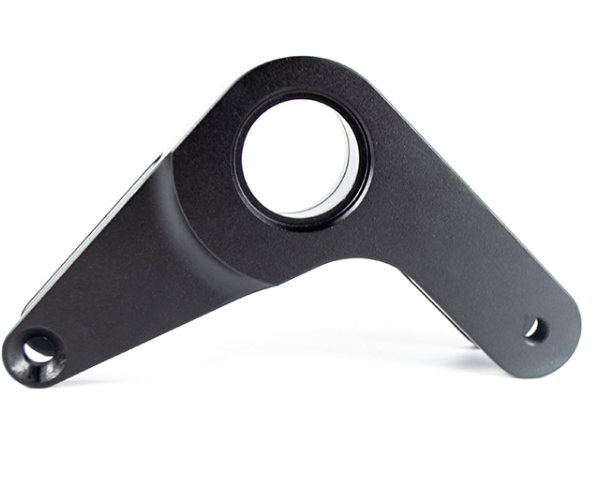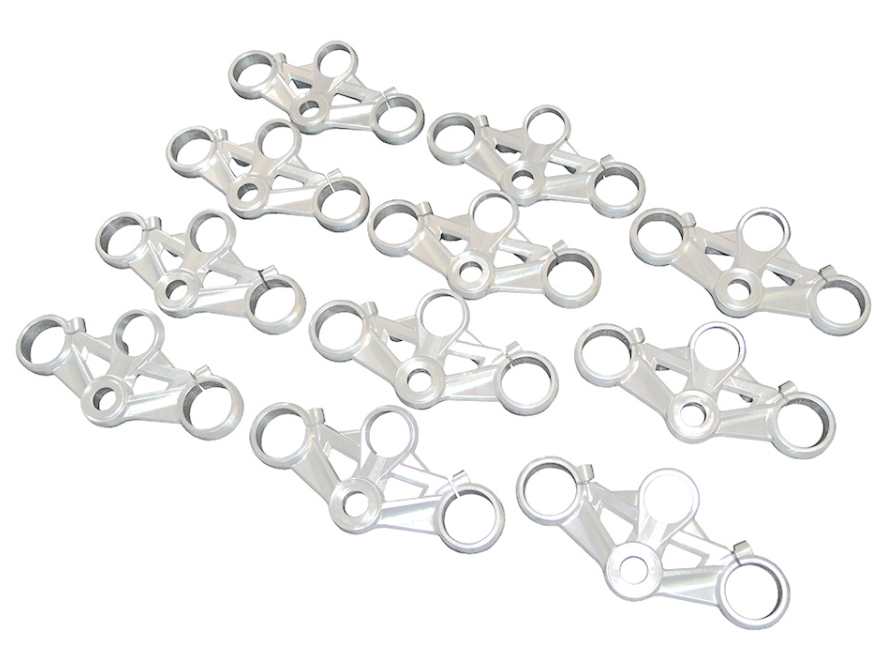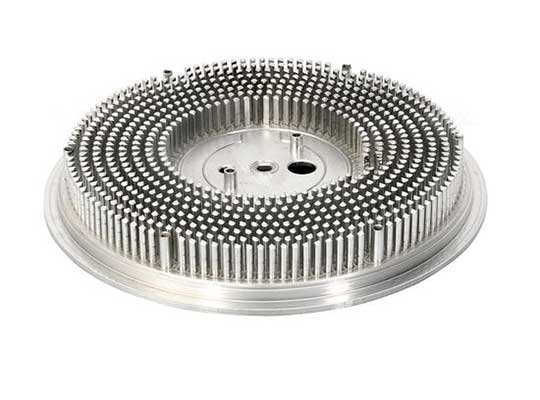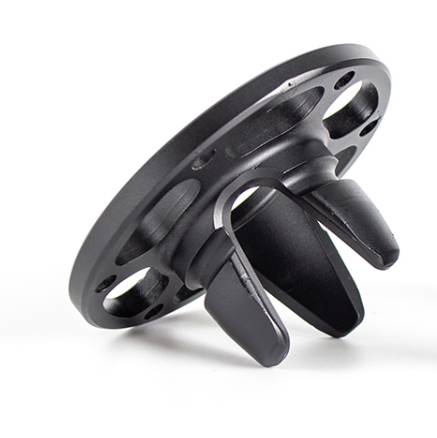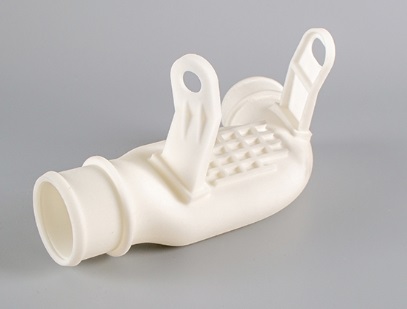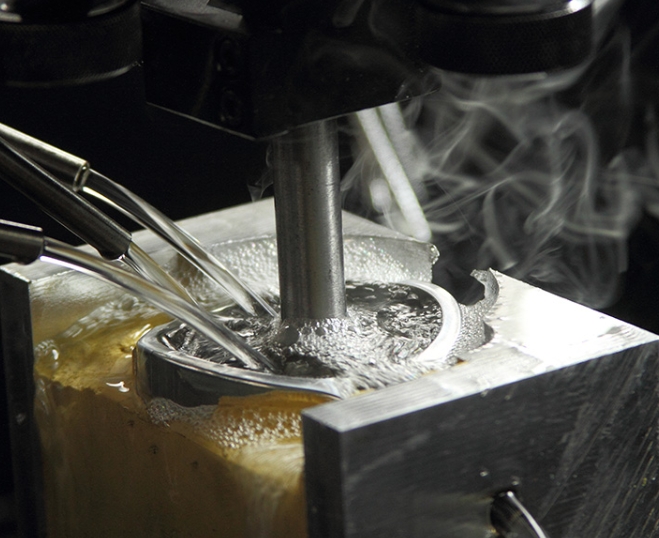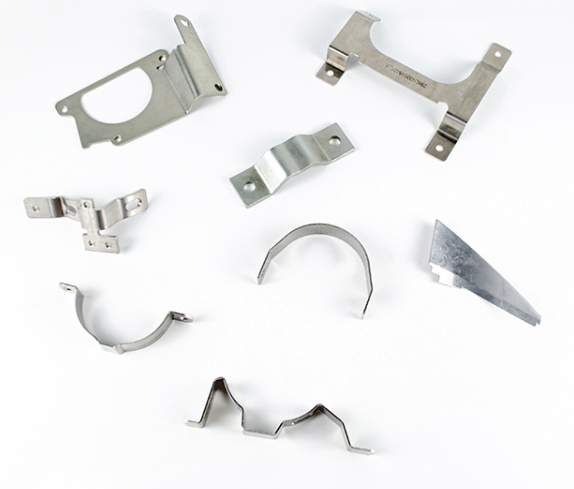If you’re a product designer, jurutera, or entrepreneur gearing up for prototype development, one of the first and most critical questions you’ll face is: What materials can be used for prototype processing? The right material choice directly impacts your prototype’s functionality, ketahanan, kos, and even how well it represents the final product. Dalam panduan ini, we’ll break down all common prototype materials—from metals to plastics and beyond—explain their key properties, Kes penggunaan yang ideal, and processing tips, so you can make an informed decision for your project.
Why Material Choice Matters for Prototype Processing
Before diving into specific materials, let’s clarify why this decision is so important. A prototype isn’t just a “test piece”—it’s a tool to validate design, prestasi ujian, and showcase your product to stakeholders. The wrong material can lead to:
- Inaccurate performance tests: Contohnya, using a weak plastic for a structural part prototype won’t reflect how the final metal version will hold up.
- Wasted time and money: If a material is too hard to machine or doesn’t meet your project’s needs, you’ll have to restart the prototype process.
- Poor stakeholder perception: A low-quality prototype (Mis., a brittle plastic that cracks easily) can undermine confidence in your design.
That’s why understanding the pros, cons, and best uses of each material is essential. Di bawah, we’ll cover the three main categories of prototype materials: metal alloys, Keluli tahan karat, dan Plastik—plus special materials for unique needs.
Aloi logam: Strong and Durable Prototype Materials
Metal alloys are a top choice for prototypes that need strength, kekerasan, or resistance to wear. They’re commonly used for industrial parts, komponen automotif, and structural prototypes. Let’s break down the most popular metal alloys for prototype processing, their properties, dan aplikasi yang ideal.
| Metal Alloy Type | Common Grades | Sifat utama | Processing Method (CNC/3D Printing) | Pilihan rawatan permukaan | Ideal Prototype Use Cases |
| Aluminum Alloys | 2024, 6061, 6063, 6082, 7075, ADC12 | Ringan (density: 2.7 g/cm³), good strength, corrosion-resistant | Pemesinan CNC (paling biasa); 3D Percetakan (for complex shapes) | Sandblasting, anodizing, lukisan | Aerospace parts, automotive brackets, electronic enclosures |
| Bronze | C51000, C54400 | High ductility, good electrical conductivity | Pemesinan CNC | Menggilap, plating | Penyambung elektrik, bahagian hiasan |
| Tembaga | C26000 (Cartridge Brass) | Machinable, corrosion-resistant, golden appearance | Pemesinan CNC | Menggilap, lacquering | Decorative prototypes, hardware components |
| Copper | Electrolytic Copper (C11000) | Excellent electrical conductivity, malleable | Pemesinan CNC, 3D Percetakan (logam) | Menggilap, tin plating | Heat sinks, electrical prototypes |
| Titanium Alloy | Ti-6Al-4V | Nisbah kekuatan-ke-berat yang tinggi, corrosion-resistant (even in saltwater) | Pemesinan CNC (slow, due to hardness); 3D Percetakan | Anodizing, passivation | Peranti perubatan, aerospace components |
| Aloi magnesium | AZ31B, AZ91D | Ultra-lightweight (density: 1.8 g/cm³), good stiffness | Pemesinan CNC | Chemical conversion coating | Lightweight automotive parts, Elektronik Pengguna |
| Zinc Alloy | ZA-8, ZA-12 | Low melting point, Mudah dibuang | Die Casting (for small batches), Pemesinan CNC | Chromate conversion coating | Toy prototypes, bahagian struktur kecil |
Key Notes on Aluminum Alloys
Aluminum alloys are the most widely used metal materials for prototypes—and for good reason. Grades like 6061 dan 6063 are easy to machine (CNC machining can finish a 6061 prototype in 1–3 days) and offer a great balance of strength and cost. 7075 aluminum is stronger (used for high-stress parts) but slightly harder to machine, so it may add 1–2 days to your prototype lead time.
Selepas pemesinan, aluminum prototypes are often sandblasted to remove tool marks and anodized (a process that adds a protective oxide layer) to improve surface quality and durability. Anodizing also lets you add color (Mis., Hitam, perak, Biru) to your prototype—perfect for presentation.
Stainless Steel: High-Strength and Corrosion-Resistant
Stainless steel is a subset of steel that contains chromium (at least 10.5%), which gives it excellent corrosion resistance. It’s ideal for prototypes that will be exposed to moisture, bahan kimia, or high temperatures. Below are the most common stainless steel types for prototypes.
| Stainless Steel Type | Common Grades | Sifat utama | Kebolehkerjaan (1=Easy, 5=Hard) | Magnetic? | Ideal Prototype Use Cases |
| Austenitic (Most Common) | 304, 316 | Non-magnetic, high corrosion resistance, ductile | 3 (Sederhana) | Tidak | Food processing equipment, medical tools, marine parts |
| Ferritic | 409, 430 | Magnetic, good corrosion resistance, lower cost | 2 (Mudah) | Ya | Automotive exhaust parts, peralatan rumah tangga |
| Martensitic | 410, 420 | Magnetic, hardenable (via heat treatment), kekuatan tinggi | 4 (Hard) | Ya | Cutting tools, injap, high-stress mechanical parts |
| Galvanized Steel | G90, G60 | Zinc-coated (prevents rust), kos rendah | 2 (Mudah) | Ya | Outdoor prototypes, structural brackets |
| Mild Steel (Low Carbon Steel) | 1018, 1020 | Kos rendah, Mudah untuk mesin, good weldability | 1 (Mudah) | Ya | Basic structural prototypes, kurungan |
Why 304 dan 316 Stainless Steel Are Top Choices
304 Keluli tahan karat is the most popular for prototypes—it’s affordable, Mudah untuk mesin, and works for most non-extreme environments. 316 Keluli tahan karat is more corrosion-resistant (thanks to added molybdenum) but costs 20–30% more. It’s worth the extra cost for prototypes that will be exposed to saltwater (Mis., marine parts) or chemicals (Mis., laboratory equipment).
One unique benefit of stainless steel is its magnetic absorption (for ferritic and martensitic grades). This makes it ideal for prototypes that need to attach to magnetic surfaces—like a tool prototype that needs to stick to a workshop magnet board.
Plastic Materials: Versatile and Cost-Effective for Prototypes
Plastics are the most versatile prototype materials—they come in a wide range of hardness, fleksibiliti, ketelusan, and heat resistance. They’re perfect for consumer products, elektronik, Peranti perubatan, and prototypes where weight or cost is a concern. Let’s break down the most common plastics for prototype processing, plus when to choose 3D printing vs. Pemesinan CNC.
Common Plastic Materials for Prototypes
| Plastic Type | Common Grades/Variants | Sifat utama | Processing Suitability (3D Printing/CNC) | Rintangan suhu (Max) | Ideal Prototype Use Cases |
| Abs | Standard ABS, High-Temperature ABS | Tahan terhadap kesan, Mudah untuk mesin, kos rendah | Pemesinan CNC (excellent); 3D Percetakan (FDM) | 80–100°C | Consumer electronics enclosures, toy prototypes |
| Ms (Polipropilena) | PP Homo, PP Copolymer | Chemical-resistant, fleksibel, lightweight | Pemesinan CNC; 3D Percetakan (FDM) | 100–120°C | Bekas makanan, perumahan peranti perubatan |
| Pc (Polikarbonat) | Lexan (brand name) | Kekuatan impak yang tinggi, telus, tahan haba | Pemesinan CNC; 3D Percetakan (SLA/FDM) | 120–135°C | Safety goggles, electronic display covers |
| PMMA (Akrilik) | Plexiglas (brand name) | Telus (92% penghantaran cahaya), tahan gores | Pemesinan CNC; 3D Percetakan (SLA) | 80–90°C | Display cases, transparent prototypes |
| Pom (Asetal) | Delrin (brand name) | Low friction, high stiffness, tahan tahan | Pemesinan CNC | 100–110°C | Gear, galas, mechanical components |
| PU (Polyurethane) | Domestic PU, Imported PU, Transparent PU, Soft PU | Fleksibel (Shore hardness: 30A–90D), tahan lama | 3D Percetakan (SLA for soft variants); Pemesinan CNC (for rigid variants) | 80–100°C | Cushioned parts, genggaman, flexible enclosures |
| Silikon | Translucent 905, 918; Transparent T-4, 8678 | Tahan haba, fleksibel, biokompatibel | 3D Percetakan (SLA); Mold Casting | 200-250 ° C. | Medical seals, gaskets, flexible prototypes |
3D Percetakan vs. CNC Machining for Plastic Prototypes
When should you use 3D printing vs. CNC machining for plastic prototypes? It depends on your batch size, precision needs, and design complexity:
- 3D Percetakan: Best for 1–5 unit prototypes with complex shapes (Mis., struktur kekisi, Potong). It’s faster for small batches (1-2 hari) and doesn’t require expensive tooling. Walau bagaimanapun, 3D printed plastics may have slightly lower precision (toleransi: ± 0.1mm) berbanding pemesinan CNC.
- Pemesinan CNC: Ideal for Kumpulan kecil (5-50 unit) that need high precision (toleransi: ± 0.05mm) or better mechanical properties. CNC machined plastics have smoother surfaces (less post-processing needed) and are more durable for functional tests. The downside? It takes longer (3-5 hari) and costs more for very complex designs.
Special Materials for Unique Prototype Needs
While metal alloys, Keluli tahan karat, and plastics cover most prototype needs, some projects require special materials. These are used when the final product will operate in extreme conditions (Mis., Panas yang tinggi, bahan kimia) or has unique requirements (Mis., biocompatibility). Examples include:
- Special Alloys: Inconel (for high-temperature aerospace parts), Hastelloy (for chemical resistance), and Titanium Grade 23 (biocompatible for medical implants). These are more expensive and harder to machine but essential for specialized prototypes.
- High-Performance Plastics: Mengintip (polyetheretherketone) – heat-resistant (max temp: 260° C.) and biocompatible, used for medical and aerospace prototypes; PTFE (Teflon) – non-stick and chemical-resistant, used for lab equipment prototypes.
- Composite Materials: Carbon fiber-reinforced plastics (CFRP) – lightweight and ultra-strong, used for high-performance prototypes like racing car parts or drone frames.
How to Choose the Right Material for Your Prototype
With so many options, how do you pick the best material for your project? Follow these four steps:
- Define Your Prototype’s Purpose:
- Is it for visual presentation (Mis., a client demo)? Prioritize materials with a nice finish (Mis., polished brass, transparent PMMA).
- Is it for ujian fungsional (Mis., stress tests)? Choose a material with properties matching the final product (Mis., 6061 aluminum for a structural part that will be aluminum in production).
- Is it for environmental testing (Mis., moisture resistance)? Pick corrosion-resistant materials (Mis., 316 Keluli tahan karat, PP plastic).
- Consider Mechanical Property Requirements:
- Need strength? Go for 7075 aluminum or 304 Keluli tahan karat.
- Need flexibility? Choose soft PU or silicone.
- Need transparency? Opt for PMMA or transparent PC.
- Set a Cost Budget:
- Low budget: Plastik abs, mild steel, atau 6063 aluminium.
- Mid budget: 6061 aluminium, 304 Keluli tahan karat, or PC plastic.
- High budget: Titanium alloy, 316 Keluli tahan karat, or PEEK plastic.
- Check Processing Feasibility:
- If your design has complex curves or undercuts, 3D Percetakan (with plastic or metal) may be the only option.
- If you need high precision, CNC machining is better than 3D printing for most materials.
Yigu Technology’s Perspective on Prototype Material Selection
Di Yigu Technology, we believe prototype material selection is a collaborative process—we don’t just “supply materials” but help clients match materials to their goals. Our team: 1) Provides material samples (Mis., 6061 aluminium, 304 Keluli tahan karat, Abs) so clients can test feel and finish; 2) Recommends cost-effective alternatives (Mis., 6061 instead of 7075 if strength needs are moderate); 3) Optimizes processing (CNC/3D printing) for each material to cut lead time by 15–20%. We prioritize transparency—sharing material costs, machining challenges, and performance trade-offs upfront to avoid rework. For most projects, we help clients narrow down 2–3 ideal materials in 1–2 days.
Soalan Lazim:
1. Can I use a different material for my prototype than the final product?
Ya, but only if it doesn’t affect your prototype’s purpose. Contohnya, using ABS plastic for a visual prototype of a metal part is fine—since you’re only showcasing the design. But for functional testing (Mis., stress or heat tests), the prototype material should match the final product’s key properties (Mis., kekuatan, rintangan haba) to get accurate results.
2. Which is more cost-effective: metal or plastic prototypes?
Plastic prototypes are usually cheaper—ABS or PP plastic costs 30–50% less than aluminum or stainless steel. They also require less machining time (faster turnaround) and lower post-processing costs. Walau bagaimanapun, if your prototype needs strength (Mis., a structural part), metal may be worth the extra cost to avoid testing failures.
3. How do I know if a material is suitable for 3D printing vs. Pemesinan CNC?
Check two things: 1) Design complexity: If your prototype has undercuts, struktur kekisi, atau saluran dalaman, 3D printing is better (CNC can’t reach these areas easily). 2) Batch size: For 1–5 units, 3D printing is faster and cheaper. Untuk 5+ unit, CNC machining is more cost-effective (it has higher per-unit speed once set up). Most plastics and some metals (aluminium, Titanium) work for both methods—ask your manufacturer for guidance if you’re unsure.
